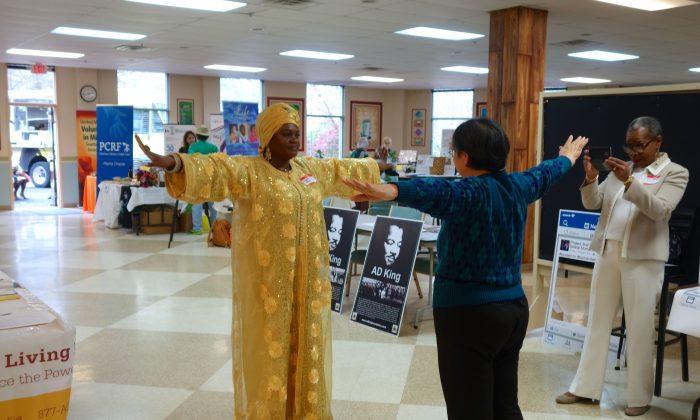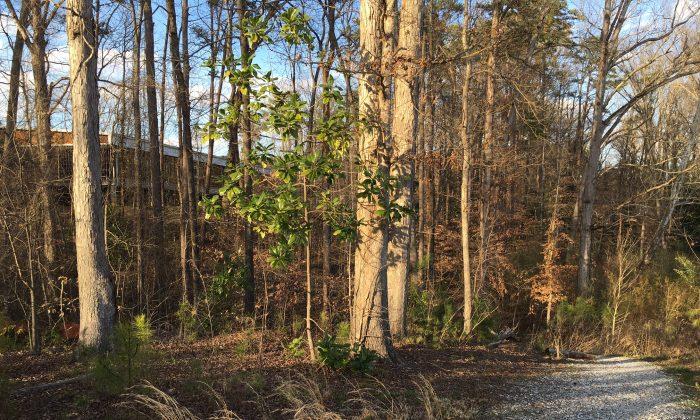ATLANTA—The housing bubble sparked a little war in my neighborhood. The first to fall was a small green ranch house, razed soon after its elderly owner died. With amazing speed, a turreted brick edifice with a stained glass window took its place. With the same rhythm as popcorn, first one, then another, then three, then more houses were crunched into oblivion. Big honking marvels grew on the clear cut lots, towering over their smaller, older siblings, changing patterns of sun and drainage.
Giant machinery rumbled through the formerly quiet streets. A Dumpster was parked on a forested certified wildlife habitat yard. Fast food wrappers, never before seen, became endemic. Debris washed onto driveways, and mariachi music came from the radios of construction teams.
Residents resisted. The high school’s French teacher, a college librarian, and a couple of others went door to door with a petition. If they got enough signatures, the county commissioners would put an ordinance to limit the height of the new houses on the next ballot.
Developers fought back. Some of them were residents, too, and they felt their livelihoods were threatened by the proposed ordinance. They feared the proposed height restrictions would make the new houses hard to sell.
A real estate lawyer hosted a tense meeting in her living room, for ordinance supporters and opponents. A whippet-thin new house purchaser with an English accent said she felt unwelcome. Someone stole flagstones from her backyard while the house was being built, she said. Were people going to hate her when she moved in?
Someone called the smaller houses “starter homes,” prompting an almost tearful rebuttal from a 30-year resident. She said she simply considered them homes.
“Save the Neighborhood” and “Fight the Ordinance” signs were stolen, swapped, and planted on piles of rubble on construction sites. Someone defaced a construction sign with spray paint. Complaints went to the county enforcement office. Developers hired two lost and impoverished looking people in flip flops to walk and deliver fliers asking their neighbors to fight the proposed restrictions to personal freedom.
Two sold their houses, saying they had to escape before the neighborhood was destroyed.
The climactic battle came at the county commission meeting. Team real estate pulled up outside the auditorium with a truckload of freshly printed yellow t-shirts and signs. Team height limits was more numerous, but less polished. Citizens stood in long lines to give their three minutes of free speech. One man said he feared the ordinance would stop him from selling his ill mother’s house, and he was afraid he could not afford her care if that happened. One accused the commissioners of not being interested in what ordinary people wanted, but only in getting the biggest campaign donations.
The ordinance passed. The economy crashed. Construction stopped. Three foreclosures sit forlornly on my street. One is a boarded up little house, one is an early big house, and one is a graveled lot, its weeds covered with bees and butterflies.
The French teacher revived an old tradition of potluck and beer in the driveway on Friday nights, so we could meet our new neighbors and welcome them. We started a new tradition of a Halloween block party, with face painting, storytelling, and candy. One of the new neighbors built a suspension bridge over his backyard creek, and offered to help my husband and me build one.
We do not hate the newcomers. America is resilient and forgiving. Although you would never know it from how much we complain about things.
Giant machinery rumbled through the formerly quiet streets. A Dumpster was parked on a forested certified wildlife habitat yard. Fast food wrappers, never before seen, became endemic. Debris washed onto driveways, and mariachi music came from the radios of construction teams.
Residents resisted. The high school’s French teacher, a college librarian, and a couple of others went door to door with a petition. If they got enough signatures, the county commissioners would put an ordinance to limit the height of the new houses on the next ballot.
Developers fought back. Some of them were residents, too, and they felt their livelihoods were threatened by the proposed ordinance. They feared the proposed height restrictions would make the new houses hard to sell.
A real estate lawyer hosted a tense meeting in her living room, for ordinance supporters and opponents. A whippet-thin new house purchaser with an English accent said she felt unwelcome. Someone stole flagstones from her backyard while the house was being built, she said. Were people going to hate her when she moved in?
Someone called the smaller houses “starter homes,” prompting an almost tearful rebuttal from a 30-year resident. She said she simply considered them homes.
“Save the Neighborhood” and “Fight the Ordinance” signs were stolen, swapped, and planted on piles of rubble on construction sites. Someone defaced a construction sign with spray paint. Complaints went to the county enforcement office. Developers hired two lost and impoverished looking people in flip flops to walk and deliver fliers asking their neighbors to fight the proposed restrictions to personal freedom.
Two sold their houses, saying they had to escape before the neighborhood was destroyed.
The climactic battle came at the county commission meeting. Team real estate pulled up outside the auditorium with a truckload of freshly printed yellow t-shirts and signs. Team height limits was more numerous, but less polished. Citizens stood in long lines to give their three minutes of free speech. One man said he feared the ordinance would stop him from selling his ill mother’s house, and he was afraid he could not afford her care if that happened. One accused the commissioners of not being interested in what ordinary people wanted, but only in getting the biggest campaign donations.
The ordinance passed. The economy crashed. Construction stopped. Three foreclosures sit forlornly on my street. One is a boarded up little house, one is an early big house, and one is a graveled lot, its weeds covered with bees and butterflies.
The French teacher revived an old tradition of potluck and beer in the driveway on Friday nights, so we could meet our new neighbors and welcome them. We started a new tradition of a Halloween block party, with face painting, storytelling, and candy. One of the new neighbors built a suspension bridge over his backyard creek, and offered to help my husband and me build one.
We do not hate the newcomers. America is resilient and forgiving. Although you would never know it from how much we complain about things.





Friends Read Free